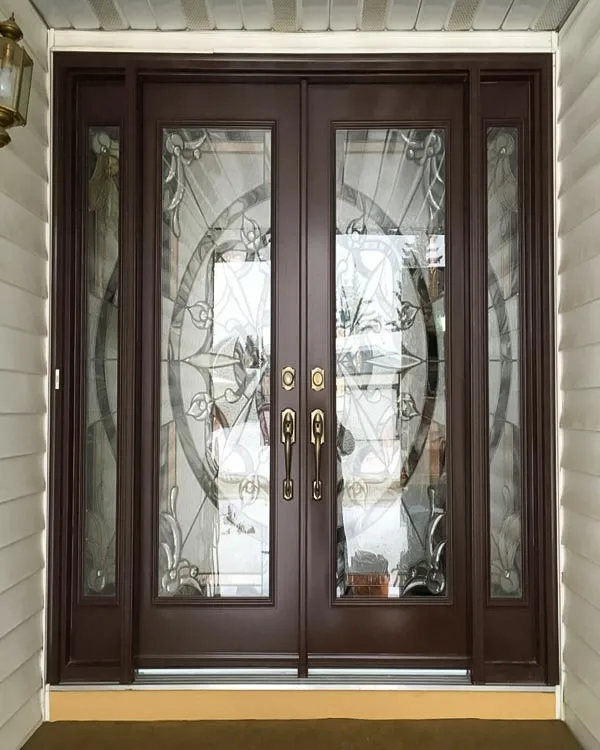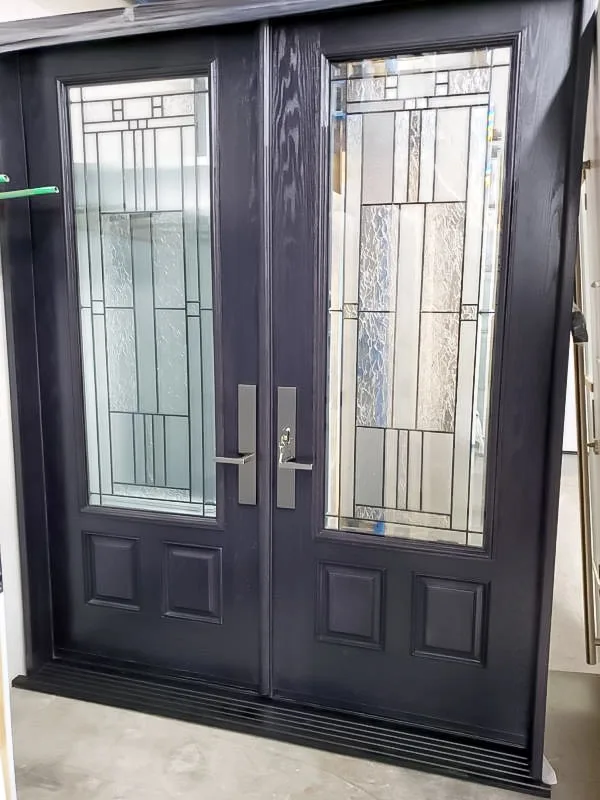Importance of home energy efficiency
Improving your home’s energy efficiency is crucial for saving money on utility bills and reducing your environmental impact. A well-insulated home with energy-efficient appliances and effective door solutions can help maintain a comfortable indoor temperature without overworking your heating and cooling systems. By investing in the right exterior door repair solutions, you can prevent air leaks, drafts, and energy wastage, ensuring your home stays cozy in winter and cool in summer. This not only enhances your comfort but also contributes to a greener and more sustainable living environment for you and your family.

Signs of exterior door damage
Doors that are difficult to open or close, gaps around the door frame, moisture seeping in, and drafts coming from the door indicate potential exterior door damage. Cracks or warping on the door surface, peeling or bubbling paint, and soft spots on the door are also signs that your exterior door may need repair. If you notice any of these issues, it’s essential to address them promptly to maintain your home’s energy efficiency and security.
Understanding exterior door repair
Exterior door repair can help improve your home’s energy efficiency by fixing any gaps or damage that allow cold air to seep in and warm air to escape. By properly repairing your exterior door, you can reduce your energy bills and make your home more comfortable. Common issues that may require repair include:
- Weatherstripping: Worn or damaged weatherstripping can create drafts around the door.
- Leaks: Gaps or cracks around the door frame can let air in and out.
- Hinges and Hardware: Loose hinges or damaged hardware can prevent the door from sealing properly.
- Rot or Damage: Rotting wood or other damage to the door itself can compromise its insulation properties.
Addressing these issues through exterior door repair can enhance your home’s energy efficiency and overall comfort.
Materials needed for the repair
For a typical exterior door repair, you may need the following materials:
- Wood Putty: Used to fill in any cracks or holes in the door.
- Sandpaper: Helps to smooth out the surface of the door before painting.
- Primer and Paint: Required to refinish the door after the repair.
- Replacement Hardware: Such as screws, hinges, or a doorknob, if necessary.
- Weather Stripping: Ensures a tight seal around the door to improve energy efficiency.
- Caulk: Used to seal any gaps between the door frame and the wall.
Steps to repair your exterior door
To repair your exterior door, you can follow these simple steps:
- Identify the issue: Check for any visible damage, such as cracks, dents, or warping.
- Gather materials: You may need sandpaper, wood filler, paint, a screwdriver, and a new weatherstripping.
- Fix any cracks or dents: Sand down the damaged area, fill it with wood filler, and let it dry completely.
- Realign the door: If the door is not hanging properly, check the hinges and screws to see if they need adjusting.
- Check the weatherstripping: Replace any worn-out weatherstripping to improve energy efficiency.
- Repaint or refinish: Consider painting or refinishing the door for a fresh look and added protection.
- Regular maintenance: Keep your exterior door in top condition by performing regular inspections and maintenance.
Choosing the right exterior door for energy efficiency
When selecting an exterior door for better energy efficiency at home, consider opting for doors with energy-efficient features. Look for doors with a tight seal to prevent air leaks, insulating materials to keep your home’s temperature stable, and energy-efficient glass to allow natural light without losing heat. Fibreglass or insulated steel doors are excellent options for energy efficiency. Choose a door with a low U-factor to reduce heat loss and improve insulation.
Weatherstripping and sealing techniques
Weatherstripping and sealing techniques are essential for keeping your home energy-efficient. By using weatherstripping, you can seal any gaps around your exterior doors to prevent air leakage. This helps in maintaining a consistent temperature inside your home and reducing your energy bills. Some common weatherstripping materials include felt, foam, rubber, or vinyl. Additionally, sealing techniques involve caulking any cracks or gaps in the door frame to further prevent drafts. Proper weatherstripping and sealing can improve the overall comfort of your home while saving you money on heating and cooling costs.
DIY vs professional door repair
If you have some handy skills and enjoy fixing things around the house, you might be tempted to take on DIY door repair to save some cash. However, door repairs can be trickier than they seem. Professional door repair services can ensure that the job is done correctly and that your door functions optimally. Professional repairs also come with warranties, giving you added peace of mind.
Energy-saving benefits of a properly repaired exterior door
Repairing your exterior door can significantly reduce your home’s energy consumption by eliminating drafts and air leaks. This means less energy wasted on heating or cooling your home. A properly repaired exterior door can also enhance the overall insulation of your home, keeping it more comfortable throughout the year.
Maintaining energy efficiency in your home
Energy efficiency in your home can be maintained by paying attention to your exterior doors. Ensure that your doors are properly sealed and insulated to prevent heat or cool air from escaping. Weather-stripping and caulking are affordable solutions to seal any gaps around your door. Consider adding a door sweep to the bottom of your door to further enhance insulation. Upgrading to energy-efficient doors with Low-E glass can also help reduce energy loss. Regularly check your doors for any signs of wear and tear, and promptly repair or replace them to optimize your home’s energy efficiency.



